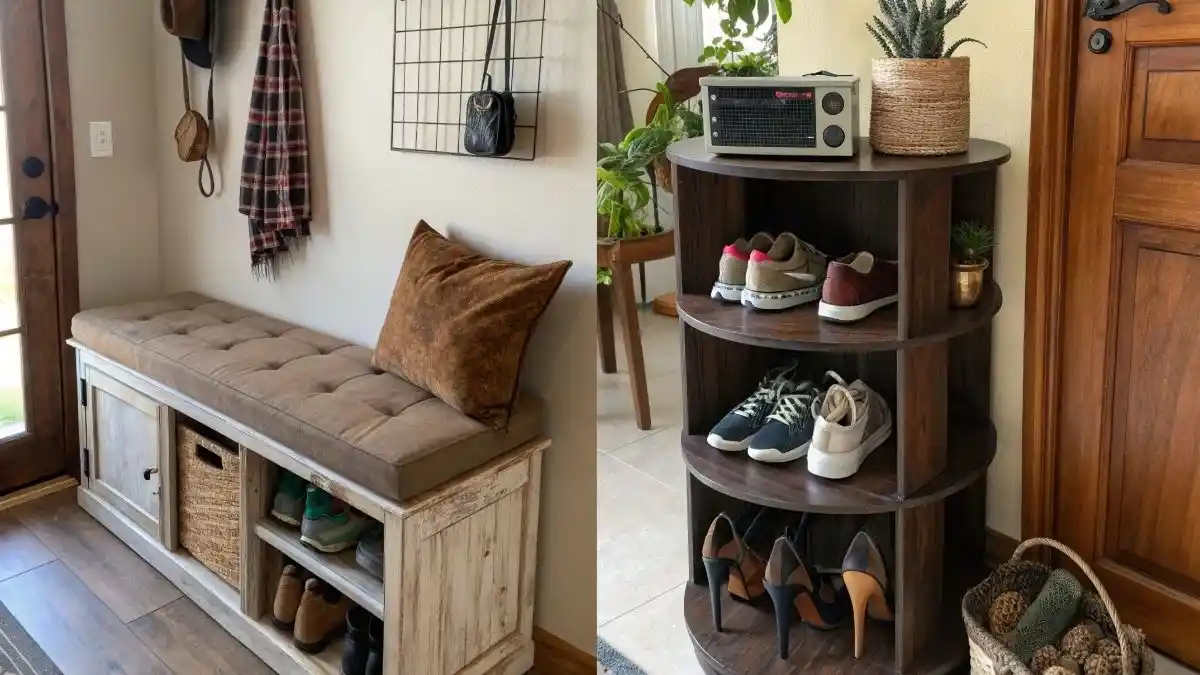How to Get Rid of Mould in Bedroom Ceiling
Ugh, mould on the bedroom ceiling again? Super annoying, right? I’ve totally been there — those nasty dark patches pop up outta nowhere and just ruin the vibe. But hey, how to get rid of mould in bedroom ceiling isn’t as scary as it sounds. You don’t need a fancy team or a science degree to fix it. Just a few tools, some patience, and a lil’ elbow grease.
First, figure out what’s makin’ it happen — usually it’s damp or poor airflow. Then grab some gloves, vinegar or a mould spray, and scrub it away (but safely, ofc). And don’t forget to air out your room so it don’t come back!
Seriously, once you know how to get rid of mould in bedroom ceiling the easy way, it’s like, why didn’t I do this sooner? Clean ceiling = better sleep and less sneezy mornings.
UNDERSTANDING MOULD
Alright, before ya go scrubbin’ stuff, ya gotta know what mould even is. It’s basically a weird fungus that just loves chillin’ in wet, humid spots. So if you’re wonderin’ how to get rid of mould in bedroom ceiling, first off—yep, you prob got a leaky roof or somethin' makin’ it damp up there. Don’t just clean it and bounce, cuz if the moisture’s still there, the mould’s comin’ back for round two.
TYPES OF MOULD COMMONLY FOUND IN HOMES
Mould ain’t all the same. There’s actually a bunch of types that pop up in homes. Some are harmless-ish, others not so much. Like, black mould? Yeah, scary stuff. Knowin’ what kinda mould you’re dealin’ with helps big time when figurin’ out how to get rid of mould in bedroom ceiling without makin’ it worse.
| Type of Mould | Color | Common Areas |
|---|---|---|
| Aspergillus | Green, White | Walls, ceilings, and floors |
| Cladosporium | Black, Green | Wooden surfaces, fabrics |
| Stachybotrys (Black Mould) | Black | Areas with chronic water damage |
CAUSES OF MOULD GROWTH IN THE BEDROOM CEILING
If you're wonderin' why mould keeps poppin’ up, well—it don’t just happen for nothin’. Figuring out the reason is like, step one in how to get rid of mould in bedroom ceiling for good.
-
Humidity’s too dang high – Moist air just hangs there and boom, mould party.
-
No air movin’ around – If your room’s always feelin’ stuffy, that’s a problem.
-
Leaks from who-knows-where – Leaky pipes or roofs drip all sneaky-like and feed the mould.
-
Condensation drama – Cold meets warm, and water forms. Guess what comes next? Yep—mould.
HOW TO GET RID OF MOULD IN BEDROOM CEILING
So you sick of lookin’ up at that nasty stuff? Let’s talk how to get rid of mould in bedroom ceiling—for real this time.
STEP 1: GATHER YOUR SUPPLIES
Don’t jump in empty-handed (been there, done that). You’ll need gloves (unless you tryna touch that gross stuff?), a mask ‘cause breathing mould = nope, some mould-fightin’ spray, scrub brush or sponge, and maybe a ladder if you short like me. Get it all together first so you ain’t stoppin’ mid-clean to go huntin' for supplies.
| Supplies | Purpose |
|---|---|
| Gloves | To protect your hands from chemicals and mould spores |
| Eye Protection | To shield your eyes from harmful spores and cleaning agents |
| Face Mask | To avoid inhaling mould spores |
| Scrub Brush or Sponge | For scrubbing the mould off the ceiling |
| Spray Bottle | To apply cleaning solutions |
| Ladder | For reaching your ceiling |
| Plastic Sheeting | To cover and protect your furniture and bed |
| Detergent and Water | Initial cleaning to remove surface grime and dirt |
| Bleach or White Vinegar | For killing the mould spores |
| Dehumidifier | To reduce moisture in the room post-cleaning |
STEP 2: PREPARE THE ROOM
Alright, before you go scrubbing away, ya gotta prep the space or you’ll end up with an even bigger mess (trust me, I learned that the hard way). Grab some old towels or plastic sheets and toss ‘em over your stuff—like your bed, floor, or anything else that you don’t want soaked or stained. Mould and cleaning spray can get everywhere if you're not careful.
Oh, and don’t forget to crack open them windows! You really don’t wanna be breathing in all that funk. Just keep the door shut though—last thing you want is mould spores takin’ a trip around the whole house.
STEP 3: APPLY PROTECTIVE MEASURES
Listen—don’t try to be a hero. Gloves, a face mask, and some sort of goggles are a must. Breathing in mould spores or getting stuff in your eyes? Nah, that’s not it. I made that mistake once and never again. Be safe now so you don’t regret it later.
STEP 4: CLEAN THE AREA
INITIAL CLEANING
Okay, now onto the good stuff. Before we jump into how to get rid of mould in bedroom ceiling, ya gotta clean off the basic grime.
Here’s what I usually do:
-
Fill up a bucket with warm water (not too hot).
-
Toss in a squirt of detergent—don’t overdo it, just enough to get sudsy.
-
Dip a cloth or sponge and gently wipe the mouldy spots.
Let it dry just a bit so it’s not soaking wet before you hit it with the stronger stuff.
MOULD REMOVAL SOLUTIONS
Now let’s kill that nasty mould for good.
Using Bleach
-
Mix 1 part bleach with 3 parts water (eyeball it, doesn't have to be perfect).
-
Put it in a spray bottle.
-
Spray the area till it’s nice and damp.
-
Wait around 15 mins—go grab a snack or somethin’.
-
Come back, scrub it down with a brush.
-
Wipe with a damp cloth so there’s no residue left.
Using White Vinegar
Bleach ain't your thing? Try vinegar.
-
No need to dilute—just pour white vinegar straight into a spray bottle.
-
Spray the mouldy spots till they’re soaked.
-
Let it sit for an hour (yep, full 60 minutes).
-
Scrub like your life depends on it.
-
Wipe clean with a damp cloth again.
Both ways work, just depends on what you got around the house or what smell you can tolerate.
STEP 5: DRY THE AREA COMPLETELY
Mould loves wet spots, so don’t give it a reason to come back. Dry the area real good. Open the windows wider, turn on a fan, or if you’ve got a dehumidifier, now’s the time to plug it in and let it do its thing.
PREVENTING FUTURE MOULD GROWTH
You don’t wanna be doing this every month, do ya? Once you’ve nailed how to get rid of mould in bedroom ceiling, make sure it stays gone.
IMPROVE VENTILATION
Poor airflow = mould magnet. Use exhaust fans, crack open the windows often, or set up a standing fan near your ceiling every once in a while. Anything that gets the air movin' will help.
CONTROL INDOOR HUMIDITY
Keep the humidity low—like under 60%. You can grab a cheap humidity reader online (mine was like 10 bucks). If it’s too high, run a dehumidifier or air con. Helps a ton especially if you live somewhere sticky.
FIX LEAKS IMMEDIATELY
See a drip? Don’t wait. Tiny leaks turn into major mould parties if you ignore them. Check the ceiling after it rains, inspect pipes, and don’t sleep on condensation buildup either.
REGULARLY CLEAN THE CEILING
Sounds like a chore, but a quick wipe-down now and then saves you a headache later. I use a damp cloth with a bit of detergent every month or so—super simple.
WHEN TO SEEK PROFESSIONAL HELP
Look, sometimes mould just wins. If things get bad, don’t mess around—call in the pros.
EXTENSIVE MOULD GROWTH
If mould’s takin’ over more than a few feet of your ceiling, it’s prob deeper than just the surface. Pros got the tools and know-how to deal with big jobs.
ALLERGIC REACTIONS OR HEALTH PROBLEMS
If mould’s messin’ with your breathing or makin’ someone in the house sick, it’s not worth the risk. Let experts handle it safe and fast.
STRUCTURAL DAMAGE
When mould’s hiding deeper—like in insulation or beams—it’s not a DIY kinda problem anymore. You’ll need someone to look at the bigger picture and fix the cause, not just wipe the stains.
CONCLUSION
So yeah, that’s basically how to get rid of mould in bedroom ceiling without losing your mind. Clean it right, dry it good, and keep it from comin’ back. It ain’t fun, but it is worth it—your health (and ceiling) will thank you.
QUICK RECAP:
-
Cover your stuff and air the room out.
-
Suit up with gloves and mask.
-
Clean the dirt, then attack the mould.
-
Use bleach or vinegar—your call.
-
Dry the spot completely.
-
Ventilate, fix leaks, and clean often.
-
Know when it’s time to call in backup.
You got this. And if it ever creeps back up, just pull out this guide and go to work. Better safe than sorry, right?









